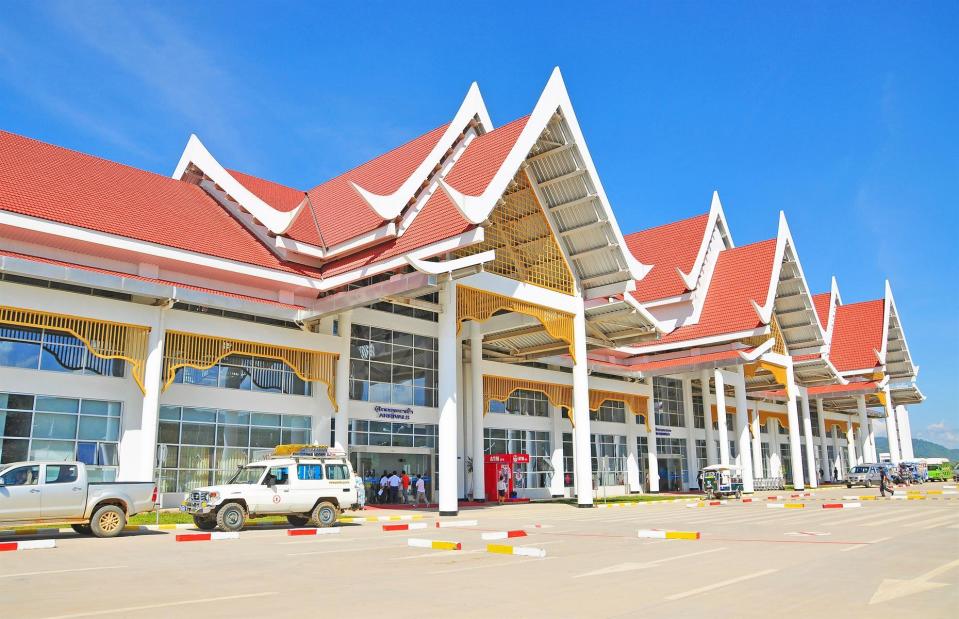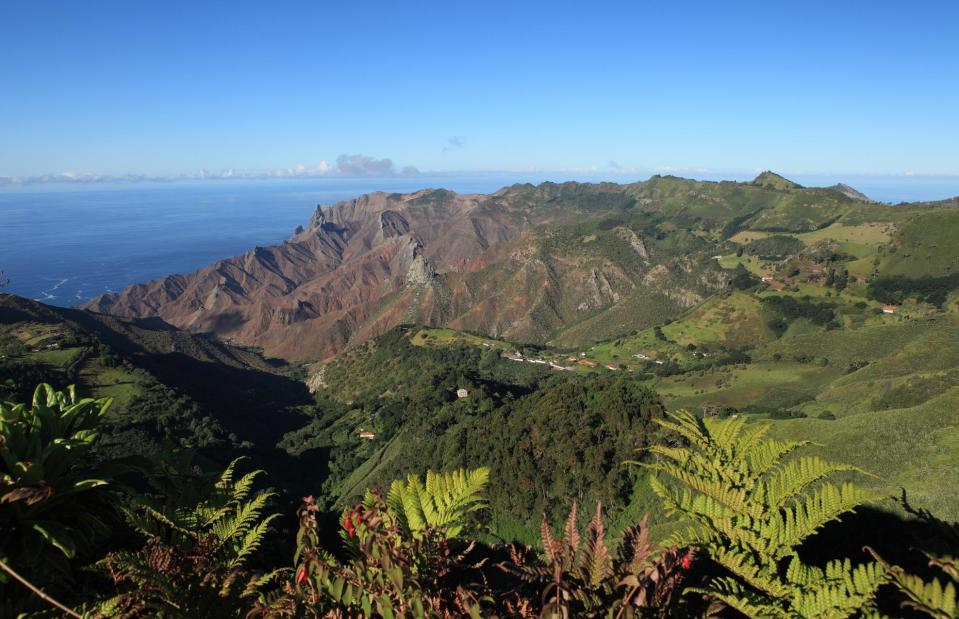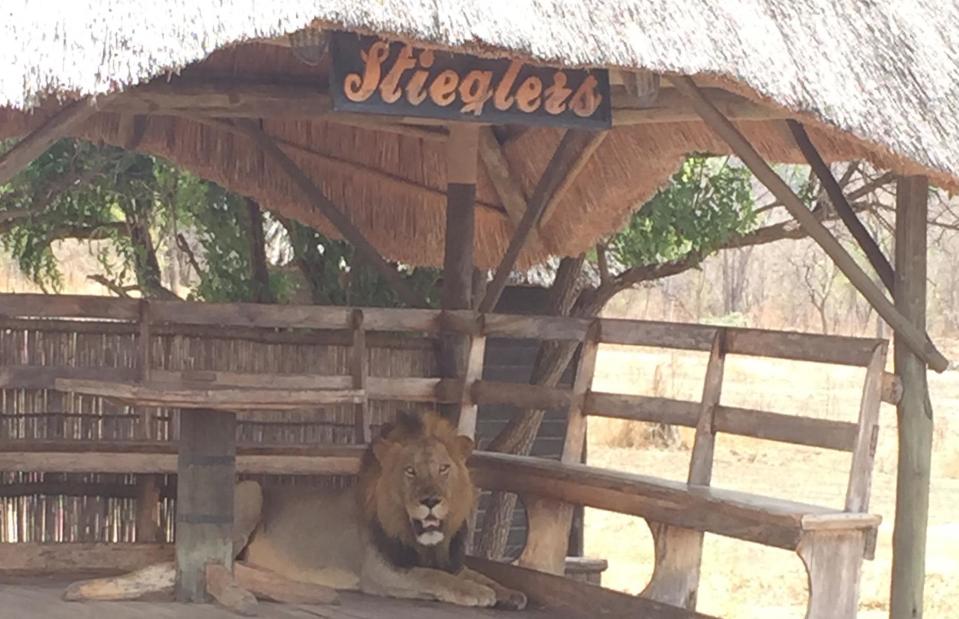These are the world's tiniest airports
Tiny but remarkable airports

Paul Tomkins/VisitScotland
When it comes to airports, it’s fair to say that bigger isn’t always better. From icy runways made of compacted snow to perilous clifftop landings, we bring you some of the smallest and most exciting landing strips in the world.
Lord Howe Island Airport, New South Wales, Australia

Tomacrosse/Shutterstock
Covering a vast territory with many isolated regional communities, Australia has plenty of tiny airports. One beautiful destination that can only be reached by plane (or private yacht) is Lord Howe Island, a volcanic, crescent-shaped island off the New South Wales coast. Home to around 300 people, the UNESCO World Heritage-listed island only allows 400 tourists a year. They touch down at an airstrip (with a compact but pleasant passenger terminal) on the east coast from Brisbane, Sydney, Port Macquarie and Newcastle.
Lord Howe Island Airport, New South Wales, Australia

David Stanley/Wikimedia Commons/CC by 2.0
Built in 1974 by the Australian Army Corp of Engineers, the airport brought the previous "flying boat" service to and from Rose Bay in Sydney to an end. Now Eastern Tour Services and QantasLink planes take passengers here, flying over the world’s southernmost barrier coral reef, part of Lord Howe Marine Park, and swooping past its tallest peak Mount Gower before descending onto the runway right next to Blinky Beach. As you can imagine for such an important biosphere, biosecurity at the airport is very strict.
Land’s End Airport, Cornwall, England

Courtesy of Isles of Scilly Steamship Group
This tiny Cornish airport right at the western tip of England has been sending passengers to and welcoming them from the Scilly Isles since 1937. For the first two years of operation, planes had to land on St Marys' golf course, until the Scilly Isles opened an airport of its own in 1939.
Land’s End Airport, Cornwall, England

Paul J Martin/Shutterstock
Today, it takes just 15 minutes to fly between Land’s End and St Mary’s (as opposed to the ferry which takes just under three hours). Tiny planes seat between eight and 19 people, and passengers get a fantastic view of the turquoise sea and the isles' pristine white beaches.
Land's End Airport, Cornwall, England

Courtesy of Isles of Scilly Steamship Group
Flights may be brief, but Land’s End's boutique airport is big on creature comforts. The £1 milllion ($1.3 million) passenger terminal opened in 2013 and still feels shiny and new. It has a wood burner to stave off the winter chill, a children’s play area and a café serving all-day bacon butties, with a terrace overlooking the airfield.
Barra Airport, Outer Hebrides, Scotland

Paul Tomkins/VisitScotland
The stunning Hebridean island of Barra is known for its rugged landscapes and unspoiled coastline, but it’s also famous for its unusual runway. Rather than a landing strip, planes descend onto the lovely white sands of Tràigh Mhòr beach. It’s said to be the only beach airport to operate scheduled flights.
Barra Airport, Outer Hebrides, Scotland

David Atherton/Shutterstock
An average of two Loganair flights (19-seat Twin Otter DHC6-400 aircraft) a day usually arrive on the shoreline from Glasgow Airport. The two planes work to a flexible timetable so they can accommodate the changing tides which wash over the sands twice a day. Barra is one of 11 airports operated by Highland and Islands Airports Limited (HIAL).
Barra Airport, Outer Hebrides, Scotland

Paul Tomkins/VisitScotland
It may be remote but, according to HIAL, in a normal year around 10,000 passengers pass through Barra airport. The beach is also popular with cockle collectors who are warned to steer clear of the landing strips. As well as a terminal building with car hire and a café, Barra has its own fire crew, although they’re more often called out to save stranded seals or dolphins than anything linked to the airport.
Luang Prabang Airport, Laos

Foodforthoughts/Shutterstock
Twenty years ago, travelling to Luang Prabang from nearby Thailand entailed a two-day trip on a slow boat down the Mekong river, or a light aircraft flight to the town's landing strip. Now Luang Prabang, which is a UNESCO heritage site, has overhauled its airport. It's still beautifully compact but sees international flights from Thailand, Vietnam, Singapore and Cambodia.
Luang Prabang Airport, Laos

Foodforthoughts/Shutterstock
The new runway and passenger terminal opened in 2013, creating a surge in tourists travelling to this once-sleepy town. Gone is the slightly dilapidated terminal from the 1960s and in is a glassy modern building, complete with air con, café and shops.
Luang Prabang Airport, Laos

Anton_Ivanov/Shutterstock
The airport is charmingly small with just one runway and terminal, with a handful of interesting little shops and spectacular mountain views from its windows. Handily, it’s just a short hop from Luang Prabang, with tuk-tuk drivers waiting to whisk passengers on the 15-minute drive into the centre.
St Helena Airport, St Helena, British Overseas Territory

Darrin Henry/Shutterstock
Sitting neatly between Africa and South America, this isolated outpost is the second most remote inhabited island on Earth. Until St Helena’s international airport opened in October 2017, its only link to the rest of the world was via a Royal Mail ship, which transported provisions and people to and from Cape Town every three weeks, and took five to six days. Now the airport is operational but notorious for its cliffside location and often challenging weather conditions.
St Helena Airport, St Helena, British Overseas Territory

Courtesy of St Helena Tourism
It was hoped a commercial airport would encourage tourism and help make the British Overseas Territory more self-sufficient. The COVID-19 pandemic delayed its tourism aspirations, but with 502 species of unique wildlife and a huge whale shark population, there’s plenty to attract adventurous travellers to the remote isle.
St Helena Airport, St Helena, British Overseas Territory

Courtesy of St Helena Tourism
There are weekly commercial flights in peak season to connect St Helena to South Africa, as well as a monthly flight to Ascension Island. It was also used by private and charter flights, as well as for technical stops by aircraft travelling between South America and Africa.
Paro International Airport, Bhutan

Courtesy of KE Adventure Travel
Flying into this remote Himalayan airport, Bhutan’s only international airport, is a spectacular experience with mind-blowing vistas of Mount Everest and the surrounding snow-clad peaks. Druk Air and Bhutan Airlines service Paro International Airport, with connections from Nepal and India.
Paro International Airport, Bhutan

Sompol/Shutterstock
The little airstrip makes for a hazardous landing, so much so that only a small amount of pilots are qualified to undertake the challenge. As well as navigating their way through the jagged peaks, they also have to deal with savage winds which blow through the Himalayan valley.
Paro International Airport, Bhutan

Marisa Martinez Tarran/Shutterstock
The treacherous landing, which involves sweeping within feet of the roofs of local houses, means flights are only permitted in daylight. The terminal building is designed in keeping with Bhutan's traditional architecture and although facilities are minimal, it has a comfortable waiting room adorned with paintings of Bhutan kings past and present.
Stieglers Gorge Airport, Selous Game Reserve, Tanzania

Courtesy of Serena Hotels
Less an airport and more an airstrip, this is where passengers arrive after a 45-minute flight from Dar es Salaam International Airport to explore Tanzania’s Selous Game Reserve, the largest game reserve in Africa. Unperturbed by the planes, local wildlife often has to be chased off the runway by rangers, and pilots do a flyby before landing, to check no furry friends are lurking in the way. Animals, such as this lion, also often frequent the hut looking for shade.
Stieglers Gorge Airport, Selous Game Reserve, Tanzania

AttilaJANDI/Shutterstock
In a normal season, three light aircraft land on the scrubby airstrip daily. The rough territory, long distances and frequently flooded roads make flying the ideal way to explore the region. As passengers descend towards the airstrip, they enjoy incredible views over the Rufiji River and, if they’re lucky, wild animals below. While the thatched arrivals hut may look unassuming, passengers quickly find themselves ushered into its shady confines for a glass of Champagne, before heading on to Selous Serena Camp.
Bodensee-Airport Friedrichshafen, Germany

Courtesy of Friedrichshafen Airport
This airport in Bodensee, southern Germany, is the birthplace of the Zeppelin. The first hydrogen-filled airship took to the skies here in 1900 after being constructed by Count Ferdinand Zeppelin, and the airport opened for flights in 1915. Today, there's still a Zeppelin hangar at the airport, which can be visited on private tours. It also operates scenic flights in an airship that go over Lake Constance, Munich and Rhineland – depatures begin in March every year.
Bodensee-Airport Friedrichshafen, Germany

Courtesy of Friedrichshafen Airport
Bodensee-Airport Friedrichshafen is now an international airport too, with shops, restaurants and regular flights to Austria, Switzerland and the UK. There's also work from local artists hanging in the terminal and the Dornier Museum, an aerospace museum, next door.
Bodensee-Airport Friedrichshafen, Germany

Courtesy of Bodensee Tourism board
Located on the banks of Bodenses (or Lake Constance), this airport has one of the most stunning landings in Europe. During their descent, passengers are wowed by glorious views of the Alpine foothills and glassy waters of Germany’s largest lake directly below.
Samui International Airport, Koh Samui, Thailand

SUPAKIT_N/Shutterstock
The privately-owned airport on the island of Koh Samui may be relatively small but it’s perfectly formed. Since opening in 1989, tourism on this lush island has boomed with flights going to and from mainland Thailand, as well as Hong Kong and Singapore. It has been dubbed the most beautiful airport in the world for its elegant design.
Samui International Airport, Koh Samui, Thailand

jeafish Ping/Shutterstock
Inside, there's traditional decor and a laid-back vacation vibe. Tasty pad Thai and coconut juice is readily available and there are Thai massages on offer, presumably to soften the blow of having to leave this enchanting island behind.
Samui International Airport, Koh Samui, Thailand

Sompol/Shutterstock
The airport's buildings here are made from locally sourced wood and rattan, with thatched roofs and palm-tree pillars in keeping with the island's traditional style. There are aquariums and pretty gardens too with views of the island’s lush coconut plantations. The airport was actually built on a former coconut plantation.
Phoenix Airfield, Ross Island, Antarctica

james_stone76/Shutterstock
Around 1,000 researchers and workers live at McMurdo Station on Ross Island during the Southern Hemisphere summer – down to 250 in winter. As the main base for the US Antarctic Program, not only is it exceedingly remote, but with temperatures plummeting as low as -58°F (-50°C) in the winter, access can be challenging. The solution? Meticulously groomed snow runways.
Phoenix Airfield, Ross Island, Antarctica

Colin Harnish/Shutterstock
Instead of tarmac strip, the runway is a lengthy stretch of snow, compacted by heavy rollers to make it almost as hard as concrete. It's strong enough to contend with the weighty, two-wheeled cargo planes that bring supplies. Many of the smaller aircraft used in Antarctica also have retractable ski landing gear to stop them sinking into snowy surfaces.
Phoenix Airfield, Ross Island, Antarctica

Stu Shaw/Shutterstock
Phoenix Airfield opened in 2016 to replace the nearby Pegasus landing strip. Unlike Phoenix, it was situated on an ice shelf which meant it moved some 140 feet (43m) a year and the condition of the runway would deteriorate during the warmer summer months.
Gustaf III Airport, St Barts, the Caribbean

Leonard Zhukovsky/Shutterstock
Only light aircraft carrying up to 20 passengers can land at Gustaf III airport (also known as Saint Barthélemy Airport) on the gorgeous Caribbean island of St Barts, and for good reason. The perilous approach involves swooping down a steep hill, just feet away from traffic and vegetation, before touching down onto a tiny 2,132-foot (650m) runway.
Gustaf III Airport, St Barts, the Caribbean

Stephanie Rousseau/Shutterstock
Pilots have to take special training in order to make the grade here, learning how to pass through the two mountains flanking the airport and cope with the often windy conditions. They also need to steadfastly ignore the hordes of tourists who linger below the approach, waving frantically at the planes. It’s a step up from the previous set up, however. Before the airport was constructed in the 1980s, planes used to land in a large savannah in St Jean right by the sea.
Paine Field Airport, Seattle, USA

Courtesy of Paine Field Propeller Airports
It's easy to see why Paine Field Airport has been up for various small airport awards, including USA Today’s Readers’ Choice Awards for Travel. The new state-of-the-art passenger terminal of the small airport in Seattle’s Snohomish County opened in 2018. It soon wowed passengers with its relaxed feel and personal, luxurious touches, including lounge-style seating (all with power outlets), fireplaces and enticing cafés.
Paine Field Airport, Seattle, USA

Michael Gordon/Shutterstock
Originally constructed in 1936, the small airport in Everett was soon after occupied by the Army Air Corps during the Second World War. And again during the conflict with Korea when its name was officially changed to Paine Air Force Base. Everett’s Flying Heritage & Combat Armor Museum tells the story. In 2019, a year after its boutique-style commercial passenger terminal opened, 24 daily domestic flights operated out of it via United and Alaska Airlines, serving 12 cities including Washington and Oregon.
Paine Field Airport, Seattle, USA

Courtesy of Paine Field Propeller Airports
However, the pandemic saw the airport suspend commercial flights from May to July 2020. Limited commercial flights resumed at Paine Field Airport in August that year. Alaska Airlines is the main airline to operate out of the airport, with services running to/from destinations such as Las Vegas, San Francisco, Anchorage and Phoenix.
Svalbard Airport, Longyearbyen, Norway

Fasttailwind/Shutterstock
Svalbard Airport sits on the Svalbard archipelago, a scattering of islands in the Arctic sea between Norway and the North Pole. The northernmost commercial airport in the world is usually popular with tourists hoping to explore the untouched wilderness and spot some of the thousands of polar bears living on the islands.
Svalbard Airport, Longyearbyen, Norway

Fasttailwind/Shutterstock
Constructing an airport on this icy island was a feat of engineering. The runway is built on a layer of permafrost but the strength of the tarmac depends on how firm the ground underneath is. Fluctuating temperatures meant frequent repaving has been needed since the airport was finished in 1975. However, insulation has now been added under sections of the runway to keep it stable.
Svalbard Airport, Longyearbyen, Norway

Doin/Shutterstock
Located just to the northwest of the archipelago’s largest settlement, Longyearbyen, Svalbard Airport operates domestic flights only between Oslo and Tromsø. In keeping with the Arctic theme, there’s a gigantic stuffed polar bear keeping a watchful eye over the baggage carousel. After all, polar bears outnumber humans in this far-flung frozen wilderness.
Juancho Yrausquin International Airport, Saba, the Caribbean

Bildagentur Zoonar GmbH/Shutterstock
Landing on this tiny airstrip, perched across a clifftop on this Dutch Caribbean island, is something of a white-knuckle ride. Pilots have just 1,312 feet (400m) to stop before they run the risk of plunging into the ocean below. Compare that to London Gatwick, which has 12,801-foot-long (3.9km) runways.
Juancho Yrausquin International Airport, Saba, the Caribbean

Mike Roberts/Flickr/CC BY 2.0
Pilots flying into Saba have to be specially trained to manage the nail-biting landing on what is the world’s shortest commercial runway. You won’t find any jumbo jets or air traffic control here either – only helicopters and turbo-prop airplanes are agile enough to make the grade.
Juancho Yrausquin International Airport, Saba, the Caribbean

Albert Nieboer/DPA/PA Images
Passengers who travel to this tiny volcanic island rate it as one of the most incredible landings in the world for its panoramic views over the Caribbean Sea, as well as the jaw-dropping ending. Winair is the only commercial airline to use the airport.
Tenzing-Hillary Airport, Lukla, Nepal

Vadim Petrakov/Shutterstock
Thanks to its proximity to Everest base camp, tiny Tenzing-Hillary Airport is Nepal’s busiest domestic terminal. But landing here is heart-stopping stuff. It’s dubbed the world’s most dangerous airport for its perilous clifftop runway, which is perched near a fearsome 9,200-foot (2.8km) drop. The airport is named after the first men to reach Everest’s summit: Sir Edmund Hillary and Sherpa Tenzing Norgay.
Tenzing-Hillary Airport, Lukla, Nepal

art of line/Shutterstock
Hillary himself spearheaded the aviation project and initially hoped to construct the airport on even terrain, but local farmers were reluctant to sell their land and he eventually purchased this steeper slope. Sherpas were employed to hack down the vegetation, then Hillary asked locals to flatten the land by performing a traditional foot stomping dance for two days. Today, the airport is a popular option for climbers keen to follow in Hillary and Tenzing's footsteps to Everest Base Camp.
Tenzing-Hillary Airport, Lukla, Nepal

Courtesy of KE Adventure Travel
The terrifying, sloping runway is just 1,729 feet (527m) long and can only be attempted by skilled pilots on clear days. There are no radar or navigation devices which means pilots have to rely on what they can see. Passengers are limited to just 15kg (33 lbs) luggage allowance. Tragically a plane crashed in April 2019, killing three people.
Tenzing-Hillary Airport, Lukla, Nepal

Courtesy of KE Adventure Travel
Despite the remote location, flying in and out of Tenzing-Hillary Airport isn’t without its creature comforts. Flights come with one member of cabin crew and a drinks service. There’s a small waiting room with a basic tea stall (pictured), but when the weather is good, passengers tend to soak up the sun and mountain views by the runway.


